CES 2024: Chinese Companies Showcase Cutting-Edge Products The 2024 Consumer Electronics Show is taking place in Las Vegas from January 9th to 12th. With over 4,000 exhibitors expected, including more than 700 in the automotive and transportation technology sectors, such as Mercedes-Benz, BMW, Volkswagen, Honda, and Tesla, as well as key supply chain companies like Bosch, Continental, and Valeo, all confirming their participation with the latest technologies. Chinese companies in the automotive industry are also showing strong interest, with 89 exhibitors showcasing their cutting-edge technologies and products in areas such as smart driving, LiDAR, automotive chips, smart cabins, and flying cars. Heesai Technology unveiled the AT512, a 512-line ultra-high-definition long-range LiDAR, at CES 2024.

Hesai Technology’s latest product for the mass production of intelligent driving vehicles, AT512, can achieve a standard measurement range of 300 meters, a 50% improvement over the previous generation product AT128; the farthest detection distance can reach 400 meters, approximately twice that of similar long-range lidar on the market. Supporting AT512’s impressive performance is Hesai’s fourth-generation self-developed chip, which has further improved integration compared to previous generations, capable of processing over 100 million points per second, enabling AT512 to provide image-level ultra-clear 3D perception at a super high point frequency of approximately 12.3 million points per second for vehicles, achieving a globally uniform 0.05° x 0.05° angular resolution, with a point cloud density 8 times that of AT128.
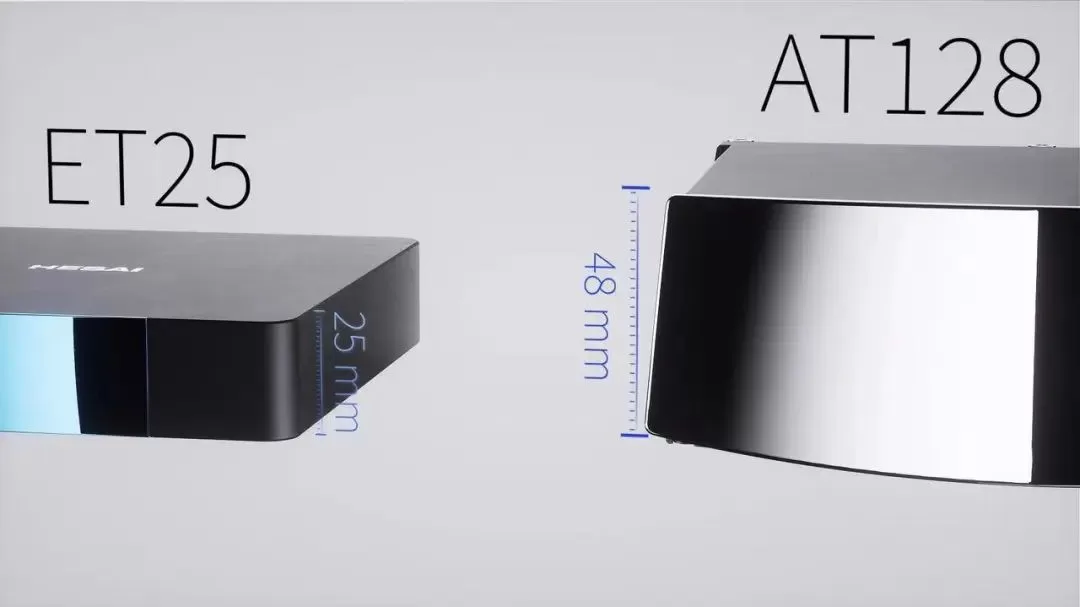
In addition to the AT512, Hesai Technology also showcased its ET25 ultra-thin long-range LiDAR and other LiDAR products at this CES. As a vehicle-grade ultra-thin long-range LiDAR, the ET25 is specifically designed to be placed behind the windshield and, while achieving an extremely thin body of only 25 mm, it enhances the ranging capability of the 905 nm LiDAR to over 250 meters. According to Hesai Technology, the ET25 recently secured a designated project from FAW Group, successfully achieving mass production breakthrough. As planned, the next generation flagship pure electric vehicle under the Hongqi brand will be the first to adopt the ET25, creating an in-cabin LiDAR intelligent driving solution. Suteng Juchuang: The M3, a 940nm ultra-long-range LiDAR, made its debut On the first day of CES 2024, local time on January 9th, Suteng Juchuang released a new product: the M3, an ultra-long-range LiDAR designed for L3+ intelligent driving pre-installation mass production.
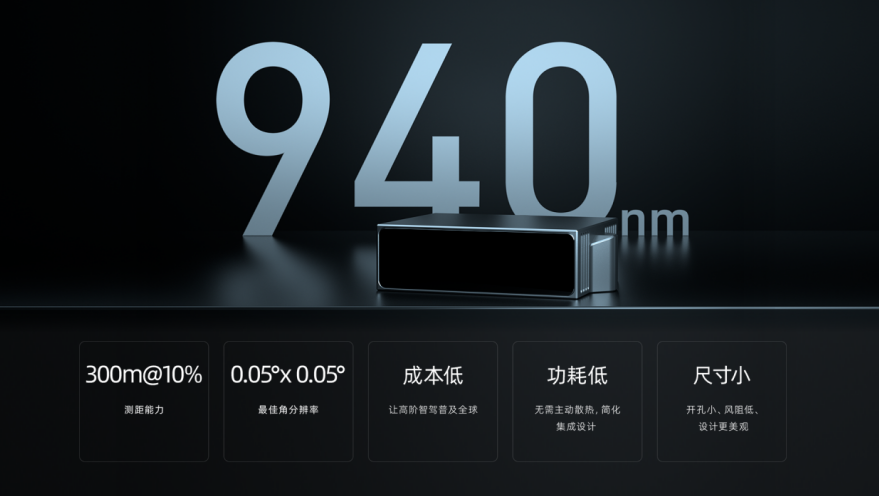
As the fourth product of the Suteng Juchuang M platform, the M3 is based on the mature 2D scanning technology of the M platform. It innovatively uses a 940nm laser transmission and reception scheme in the transmitter and receiver module, which can achieve a long-distance measurement capability of 300m@10% and a super high-definition 3D imaging capability with a resolution of 0.05°x0.05°. Thanks to the mature 2D scanning technology, the M3 not only outperforms traditional 1550nm laser radar in performance, but also has a lower cost by 40% to 50%, a size reduction of more than 50%, and a power consumption reduction of more than 30%. In addition to its impressive product performance, Suteng Juchuang pointed out that the M3 will continue to adopt the mature platform and modular design of the M platform. By keeping the specifications such as point cloud scanning form, data interface, and size unchanged, it will promote performance upgrades and cost reductions generation by generation, helping automakers significantly shorten the development cycle of vehicle upgrade projects, reduce secondary development costs, and achieve seamless upgrades of laser radar. Tuowei Technology: The full range of vehicle-compliant high-performance laser radar makes its debut Tuowei Technology showcased its flagship product Tempo with 192 lines, the cost-effective laser radar Duetto, which has achieved mass production and delivery, and the high-precision wide-field blind spot filling laser radar Scope256, covering various scenarios from advanced functions to basic ADAS applications.
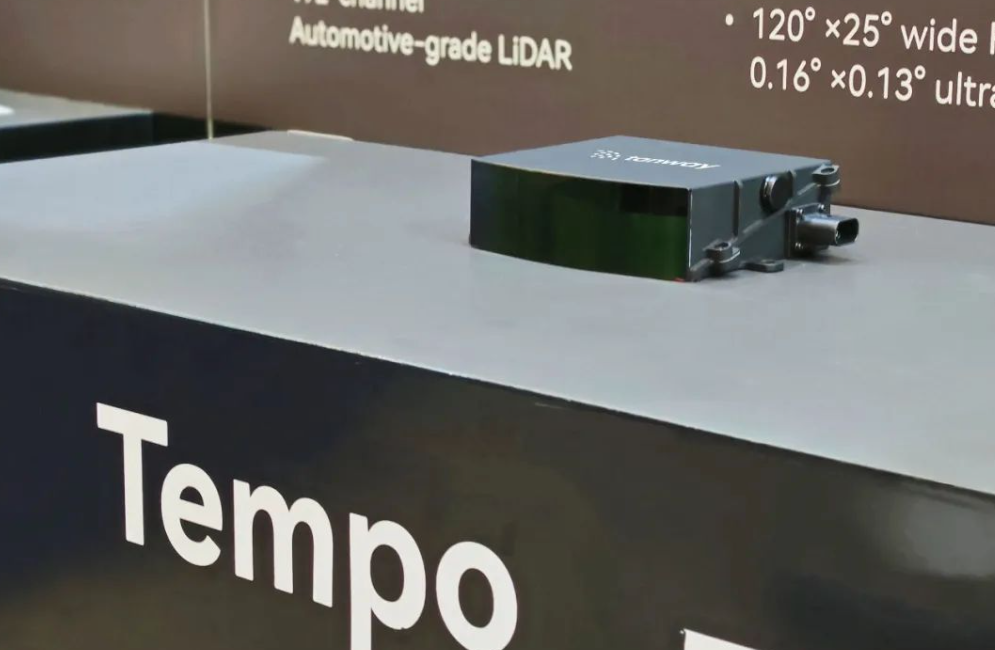
Tempo is first unveiled in the overseas market, the laser radar is known for its “ultra-high definition, super vision”, with a seamless 120° ultra-wide field of view, a maximum range of 300 meters, and an angular resolution of 0.16°x0.13°, meeting the perception needs of intelligent vehicles in complex environments during high-speed/city NOA.
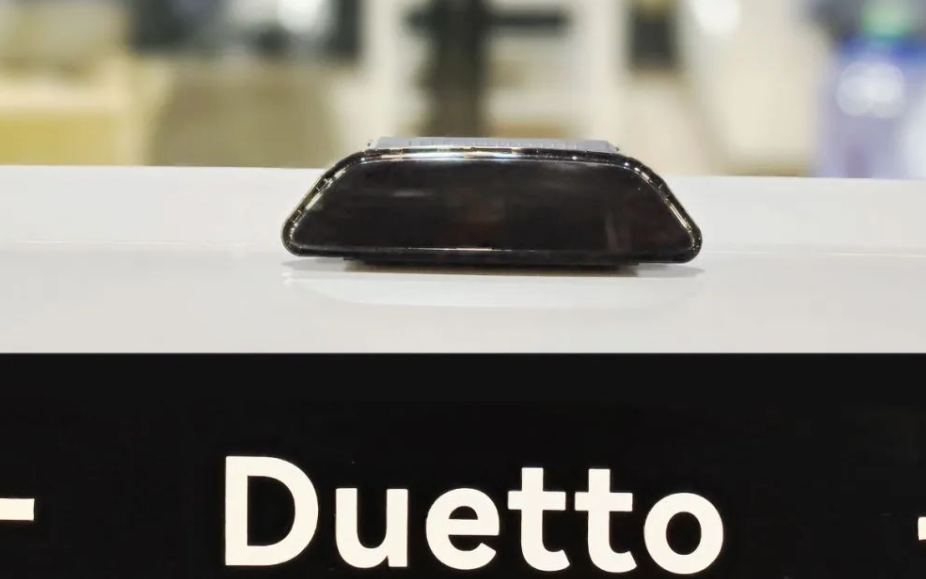
Duetto is a laser radar product designed for advanced L2+ level assisted driving, with a wide detection angle and a maximum detection distance of 300m. The ROI area reaches a resolution of 0.09°x0.19°. In October 2023, Duetto was officially put into mass production on the GAC Aion V09.

Scope256 is positioned as a short-range perception blind spot radar, focusing on “wide field of view, seeing far”, with a 120°x70° ultra-wide FoV, covering a large area of near-field vision, providing reliable perception input for intelligent driving system decision-making. One-Way Technology: The new SPAD laser radar ZVISION EZ6 makes its first public appearance As a new generation of long-range laser radar for ADAS front-end production, the innovation of ZVISION EZ6 from One-Way Technology lies in the use of a highly integrated SPAD architecture.
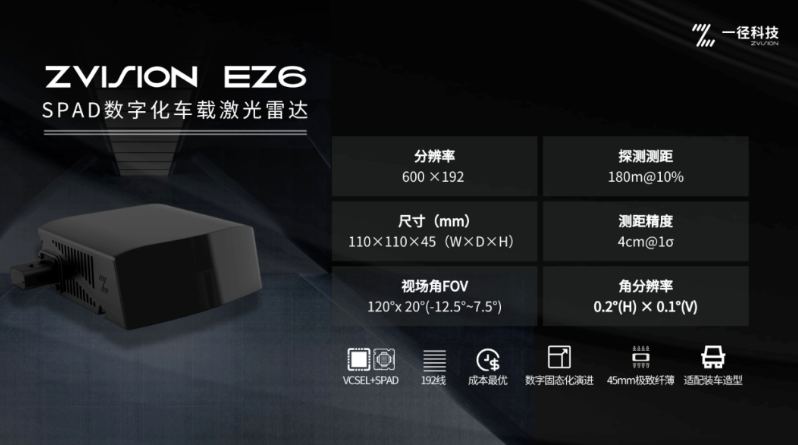
Compared to traditional laser radar architectures based on SiPM or APD, this architecture can greatly simplify the complexity of the architecture by replacing most discrete components such as photoelectric front end, amplification chain, analog-to-digital conversion, and digital signal processing with a single chip, and the back end only needs to be equipped with a super low-power processor to complete all the signal processing of the laser radar, thus improving the perception capability of the laser radar while achieving cost reduction. Specifically, ZVISION EZ6 adopts 192-line vertical scanning technology, which can achieve a range of 180m@10% and an angular resolution of 0.2°x0.1°. Due to the highly integrated and chip-based innovation of the laser radar architecture, the overall cost of EZ6 has been effectively reduced, breaking the price barrier of 2000 yuan (280$) and truly entering the “1” era. In addition, thanks to the scalability of the SPAD architecture, YiJing Technology has also launched a full application product matrix, which can evolve according to market demand to meet the differentiated needs of low-cost urban NOA applications, and some products were also showcased at CES. Daoyuan Electronics: New positioning and perception products debut together Recently, Daoyuan released three new products at the “Dare to Break” 10th anniversary event, including the A2, MEMS micro-mirror module series, and the latest generation of high-precision GNSS module NAV3120 series. At this CES, Daoyuan focused on showcasing these products.
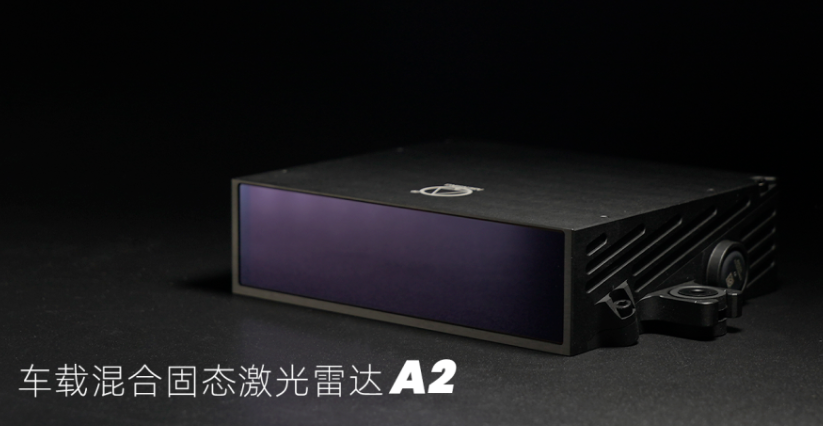
It is understood that Dao Yuan’s A2 laser radar meets vehicle standards, with highlights of small size, high reliability, and high performance, and can be widely used in advanced driver assistance systems, logistics robots, industrial robots, and engineering machinery. It has been delivered. The MEMS micro-mirror module series has passed vehicle-grade reliability tests, with low power consumption and long life, and can be used by laser radar manufacturers and industrial robot industries. It has been mass-produced and delivered to customers. The GNSS module NAV3120 series is characterized by full system, full frequency, high accuracy, and anti-interference, with multiple advantages such as low cost, small size, and low power consumption, making it the preferred solution for intelligent driving and intelligent robots. Hei Zhima Intelligence: C1200 family mass-produced chip models officially announced The evolution of vehicle electronic and electrical architecture, integration is the trend. As early as April 2023, Hei Zhima Intelligence was the first in the industry to release the first intelligent car cross-domain computing chip platform “Wudang” series, and the first chip in this series, C1200, sounded the horn for the move towards central computing.

At this CES, Black Sesame Intelligence officially unveiled the mass-produced chip models of the C1200 family, including the C1236 that supports single-chip NOA parking integration and the C1296 that supports multi-domain fusion. According to the on-site display, the C1200 series can integrate multi-domain functions on a single chip, including integrated cabin parking, 6V BEV perception display, vehicle data exchange display, hard isolation, and GPU rendering display. The vehicle-grade autonomous driving chip Huashan series A1000 was also a highlight of this exhibition. Black Sesame Intelligence demonstrated on-site the A1000 series chip-based functions such as integrated parking, urban navigation, valet parking, 3D panoramic view, vehicle-road coordination, and driver monitoring system. This chip is currently in full-scale production and delivery, and has been adopted by several leading domestic car companies, including FAW Group, Dongfeng Group, Geely Group, and Jiangling Motors Group. In addition to the above two major products, Black Sesame Intelligence also focused on showcasing its mature and comprehensive toolchain algorithms and software cases, as well as rich ecological cooperation cases at this CES exhibition.

For example, by partnering with Junlian Zhihang and its software subsidiary Junlian Zhi, Black Sesame Intelligence showcased a series of software solutions including nCCU – Central Computing Unit products, AUTOSAR product solutions, and functional domain software solutions based on the innovative creation of the Wudang series C1200 family intelligent automotive cross-domain computing chip platform, to help accelerate the rapid production of multi-domain integrated central computing products. It is reported that Junlian Zhi has developed intelligent cockpit framework and intelligent driving AP/CP middleware that can support the C1200 series intelligent automotive cross-domain computing chip platform. Wenyuan Zhixing: Autonomous minibus drives into Las Vegas Unlike many other companies mainly showcasing products, Wenyuan Zhixing introduced L4 level autonomous minibus test rides during this CES period.
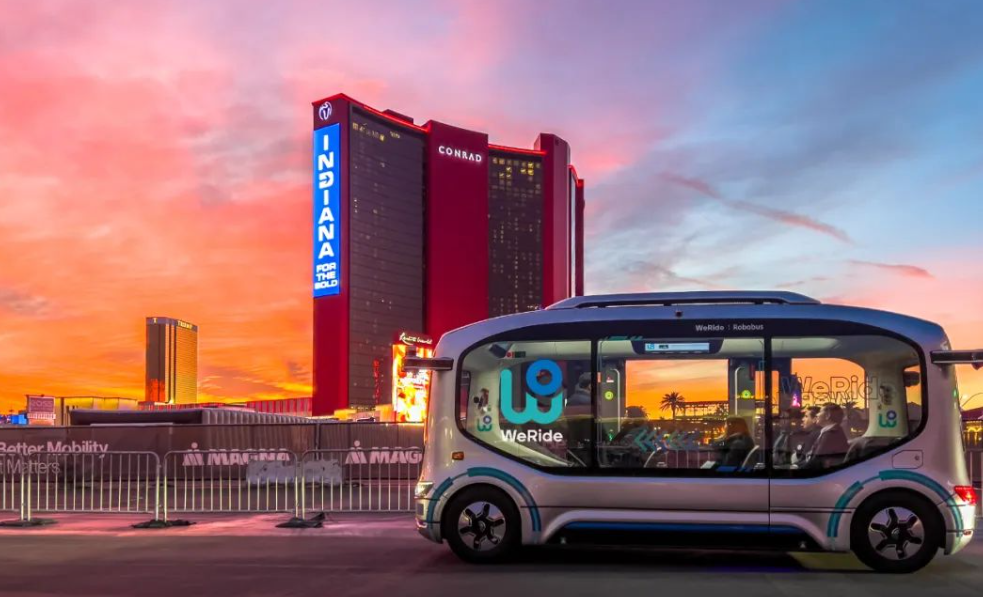
The unmanned minibus uses a fully driverless design without a cockpit, equipped with Wen Yuan Zhi Xing’s independently developed full-stack software and hardware solutions, equipped with multi-module sensors such as lidar, high-definition cameras, blind spot lidar, and millimeter-wave radar, which can perceive the surrounding road conditions without blind spots in 360 degrees, accurately identify lane lines, traffic lights, traffic signs, pedestrians, and other vehicles on the road, and efficiently handle various complex urban traffic conditions. Wen Yuan Zhi Xing has been deeply cultivating in the L4 field for many years, and has currently formed five major product matrices including autonomous taxis, autonomous minibuses, autonomous freight vehicles, autonomous sanitation vehicles, and advanced intelligent driving. It has carried out autonomous driving research, testing, and operation in more than 26 cities worldwide, with a cumulative autonomous driving mileage of over 25 million kilometers, nearly 1500 days of operation, and application scenarios covering smart travel, smart freight, and smart sanitation, among other fields. Yanfeng: Innovative cockpit solutions for automobiles are the focus During CES 2024, Yanfeng showcased highlight technologies including the newly launched EVI electric vehicle interior concept, zero-pressure seats with seat posture recognition, ClickRim modular steering wheel, and CYMATICXTM soundstream cabin. It is worth mentioning that this is also Yanfeng’s first participation in the CES exhibition.
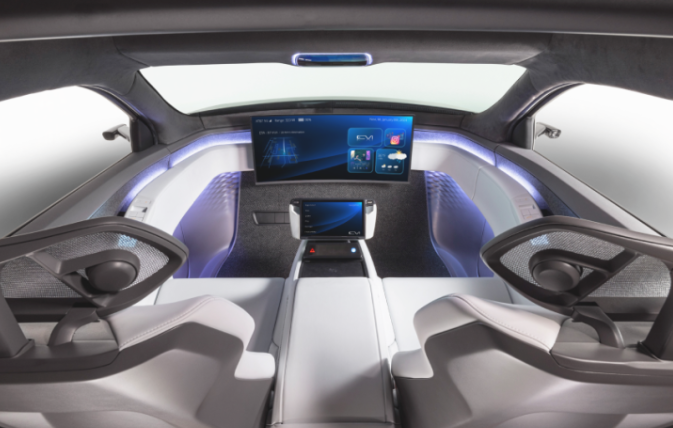
The EVI electric vehicle interior concept, as Yanfeng’s vision for future car architecture, eliminates the traditional dashboard and integrates all key features and interior functions into the intelligent cabin seats, simplifying the car interior while retaining the expected functionality for users. The new generation zero-pressure seats, based on zero-gravity research, adaptively adjust according to the passenger’s body curvature, providing stable and even support similar to suspended seats, as well as personalized experiences such as body shape adaptation, sitting posture recognition and fitting, fatigue detection, and automatic massage. The precise memory setting function also conveniently saves and recalls favorite configurations for users, allowing the cabin to actively provide a more comfortable travel experience for passengers. The modular steering wheel ClickRim adopts a modular concept, with automatically wrapping connectors designed for the steering wheel, including proprietary self-aligning housing and electrical connection systems, as well as pre-installed hand-off detection and heating pads, greatly reducing the complexity of the steering wheel product. The new automatic wrapping process can significantly improve the efficiency of steering wheel assembly.
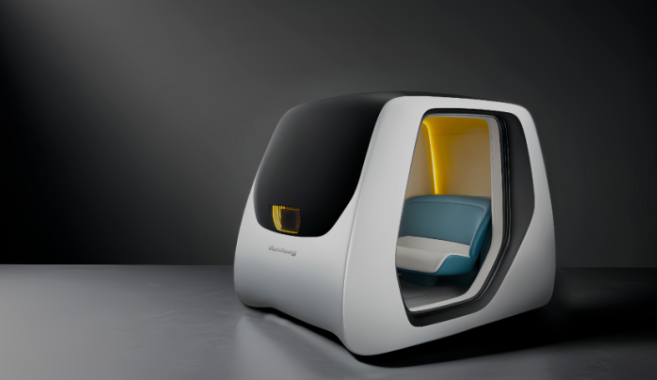
Yanfeng, in strategic cooperation with ADI and Century Image, developed the CYMATICXTM soundstream cabin. The cabin is based on a new self-developed sky sound domain controller platform, which breakthroughly carries the SONIX sound dynamic algorithm and integrates the HOLOSOUNDTM immersive audio technology to achieve all-around, real three-dimensional sound effects. BOE: Global debut of super large Oxide intelligent cabin As BOE’s global vehicle business platform, BOE Jingdian comprehensively showcased the innovative empowerment of various cutting-edge display technologies such as oxide, flexible OLED, 8K, Mini LED, and BD Cell on the automotive cabin at CES 2024.

In the field of oxide technology, BOE displayed a 45-inch 9K oxide Mini LED car-mounted screen, as well as a 14.6-inch 2.5K oxide product with high transmittance, high contrast, high color gamut, narrow bezel, and high cost performance. The Guangqi Aion Hyper GT central control is now equipped with BOE’s 14.6-inch oxide Incell car-mounted widescreen display, leading the way in mass production of large-size oxide car-mounted display products. In the field of flexible car-mounted displays, BOE exhibited a 15.05-inch car-mounted L-shaped central control screen with 1200nits ultra-high brightness, 1,000,000:1 ultra-high contrast, and 104% NTSC wide color gamut, with a dynamic scroll measurement of 200,000 times in normal temperature environment, a maximum lifting distance of 50mm, and can be applied in positions such as the instrument panel, co-pilot, rear seat, and armrest, making the vehicle interior more technological. In addition, BOE also showcased immersive high-quality car-mounted displays enabled by technologies such as Mini LED and BD Cell at CES, with a curved 27.0-inch 4K Mini LED display using Mini LED backlight technology to achieve million-level contrast, high color gamut, high transmittance, and high brightness.

In addition to innovative in-car display technology, BOE can also provide overall intelligent cockpit solutions. The 42.2-inch smart cockpit displayed on site is a fusion innovation around the in-car scene, with the appearance, display, hardware boards, and software systems of the entire cockpit independently developed by BOE. The in-car display screen has a 10K ultra-high resolution, and the instrument panel area is equipped with an under-screen camera, meeting the three needs of driving, central control, and entertainment at the same time. Hisense: Automotive electronics business made its first appearance at CES As a well-known home appliance company, Hisense has been actively laying out the automotive electronics business in recent years, taking advantage of the development of smart electric vehicles, and has designated automotive electronics as the second growth curve. At this CES, Hisense’s automotive electronics business also made its first appearance.

Hisense showcased the new ITMS through its subsidiary, SanDian. It is reported that the system can provide balanced temperature management for the cabin, battery, motor, and electronic control of electric vehicles in different environmental temperature conditions through natural refrigerant wide temperature range heat pump technology, secondary loop water system, integrated heat management module, waste heat recovery technology, and so on, to help improve the winter range of electric vehicles.

In the car display scene, Hisense also exhibited laser holographic AR-HUD and laser panoramic projection solutions. With the help of in-car optical technology, Hisense turns car windows into image screens, turning cars into immersive theaters on the go, providing new ideas for the evolution of intelligent cabin functions. Xpeng Heavens: The first public appearance of the integrated flying car on the international stage On January 9th, local time, Xpeng Heavens integrated flying car made its debut at CES 2024. This is the first public appearance on the international stage since the Xpeng Heavens integrated flying car was released in October last year.
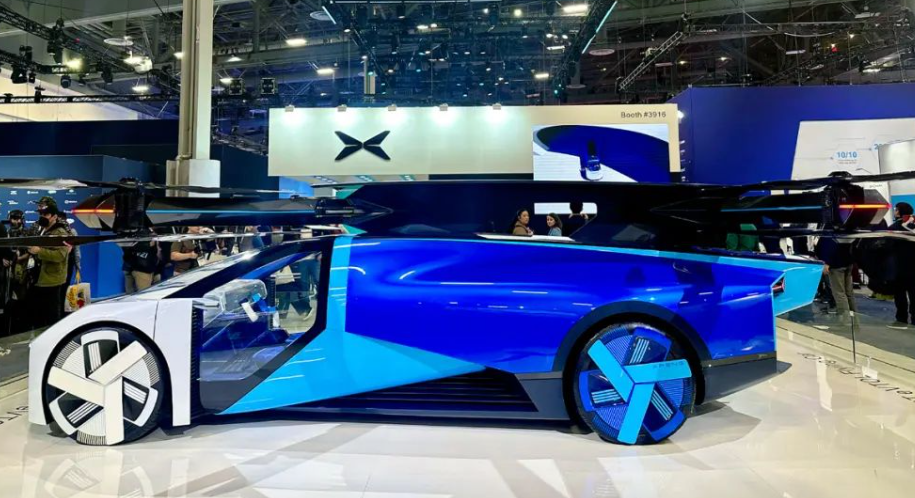
The integrated land-air flying car exhibited this time can completely fold and store the flight systems such as the arm and rotor in the vehicle body in land mode. To switch to flight mode, the arm can be opened through the folding transformation system, and vertical takeoff and landing can be achieved in environments where conditions allow, flying over congestion, obstacles, rivers, etc., meeting the demand for short-distance low-altitude travel. In addition, the integrated land-air flying car also adopts forward-looking “black technology” such as foldable steering wheel, transparent dashboard, and transparent cockpit bottom, and the intelligent cockpit can freely switch between land mode and flight mode.

At this CES, Wang Tan, co-founder and vice president of Xiaopeng Huitian, officially announced to the global media that the company’s another split-type flying car “Land Aircraft Carrier” will start booking in the fourth quarter of this year and is planned to start mass production and delivery in the fourth quarter of next year. If the delivery target is successfully achieved, it means that the “Land Aircraft Carrier” will become the world’s first mass-produced and delivered split-type flying car for individual users. The “Land Aircraft Carrier” consists of a land body and a flying body. The land body can completely accommodate the flying body inside the car for ground movement and can automatically separate and combine like “Transformers.” Youpao Technology: On-site signing of four major regional customers worldwide On January 9th, Youpao Technology delivered the first batch of skateboard chassis products Youpao UP Super Chassis to the American new car force Olympian Motors at CES 2024. At the same time, Youpao also exhibited the UP Super Chassis and Youpao Super VAN from the Youpao family, as well as the flagship model Model O1 from Olympian Motors.

Olympian Motors, headquartered in New York, USA, plans to deliver its Model O1 electric vehicle in 2024 and aims to increase sales to 100,000 units by 2027. The Youpao Super VAN, designed for urban logistics, has received 53,000 orders from markets including North America, Japan, Southeast Asia, Europe, and China, and plans to start deliveries in mid-2024. At the exhibition, Youpao Technology also signed cooperation agreements with Japan’s G Three Holdings, the Philippines’ ALACO Energy Industry Group, the US-based LUMOS Electric Vehicles, and Singapore’s FEST Electric Logistics Vehicles for the European market. LUMOS plans to launch the LC2 VAN logistics electric vehicle, based on the Youpao Super VAN, with leading range and payload capabilities in the Mexican market in mid-2024 and initiate product certification testing in the North American market in 2025. Muniu Technology: Unveiling a multi-domain millimeter-wave radar solution As one of the early domestic enterprises to focus on 4D imaging radar, Muniu Technology has been researching and developing advanced 4D imaging radar since 2017. Its products are widely used in various fields such as autonomous driving, smart transportation, smart IoT, 3D travel, and smart sports.

In the field of intelligent driving, as early as 2019, Wood Ox Technology was the first to equip the domestic 4D imaging radar to the global leading mechanical vehicle manufacturer Bobcat. Now, Wood Ox’s 4D imaging radar has been iterated to the more mature third generation I79 Imaging model, with comprehensive optimization in waveform design, aperture array, transceiver channels, algorithm architecture, computing efficiency, and anti-interference, and through fusion with the camera, it can achieve autonomous on-ramp and off-ramp, intelligent lane changing and other L3 level NOA system functions. It is reported that the current third generation 4D imaging radar-I79 of Wood Ox Technology, after integration with multiple domain controller platforms, is capable of achieving high-level intelligent driving at high speed and city level, and this solution has been finalized by a leading domestic car platform. Xingyidao Technology: 4D Imaging Real-time Surround View SLAM Debuts at CES 2024 Recently, Xingyidao Technology released the 4D millimeter-wave imaging multi-radar real-time surround view SLAM system at its Beijing headquarters, and publicly showcased the system at CES.
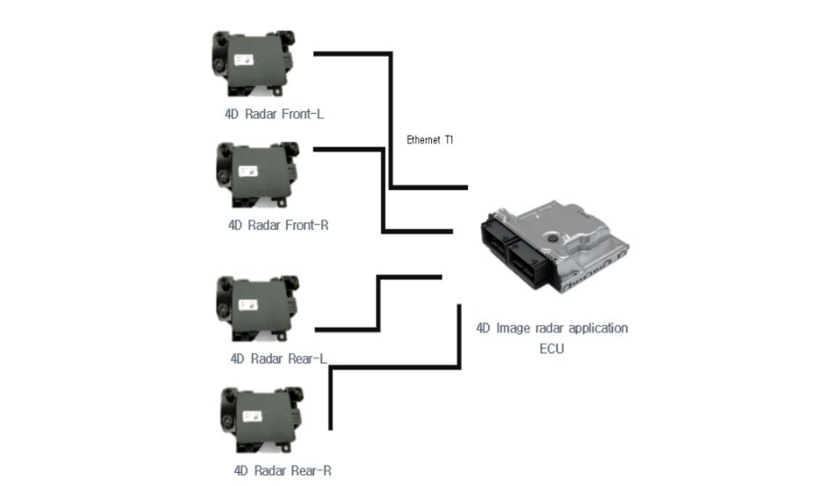
4D imaging radar real-time surround view SLAM hardware architecture: 4 cascaded imaging radars ALRR300 + a high computing domain controller, image source: Xingyidao. According to reports, Xingyidao Technology’s 4D millimeter-wave imaging multi-radar surround view SLAM system is based on 4 cascaded 4D point cloud imaging radars, combined with Xingyidao’s unique millimeter-wave imaging technology and fusion algorithm, it has achieved real-time surround view path planning on Beijing streets. According to Xingyidao, this solution can be used as a high-precision environmental perception core sensor to replace LiDAR, and can be applied to low-cost high-precision maps, automatic parking, autonomous navigation and other scenarios required for intelligent driving.